Let’s take a look at the difference between Soft White vs Daylight bulbs. This article will discuss the color difference, where to use each in your home, how each one works with different design styles, and which bulbs are my personal favorites!
If you’re struggling to figure out which light bulb temperature to use in your home, you’re not alone! For many, looking at the light bulb options at the home improvement store can be overwhelming!
Who knew there were so many choices?!
No longer is it just the size of the bulb that you need to know, you now need to know incandescent or LED lighting, watts, how many Kelvins, the number of lumens, and more! The choices can be a bit much if I’m honest.
So today I’m breaking things down for you, starting with the difference between soft white vs daylight bulbs, which are the two most common terms.
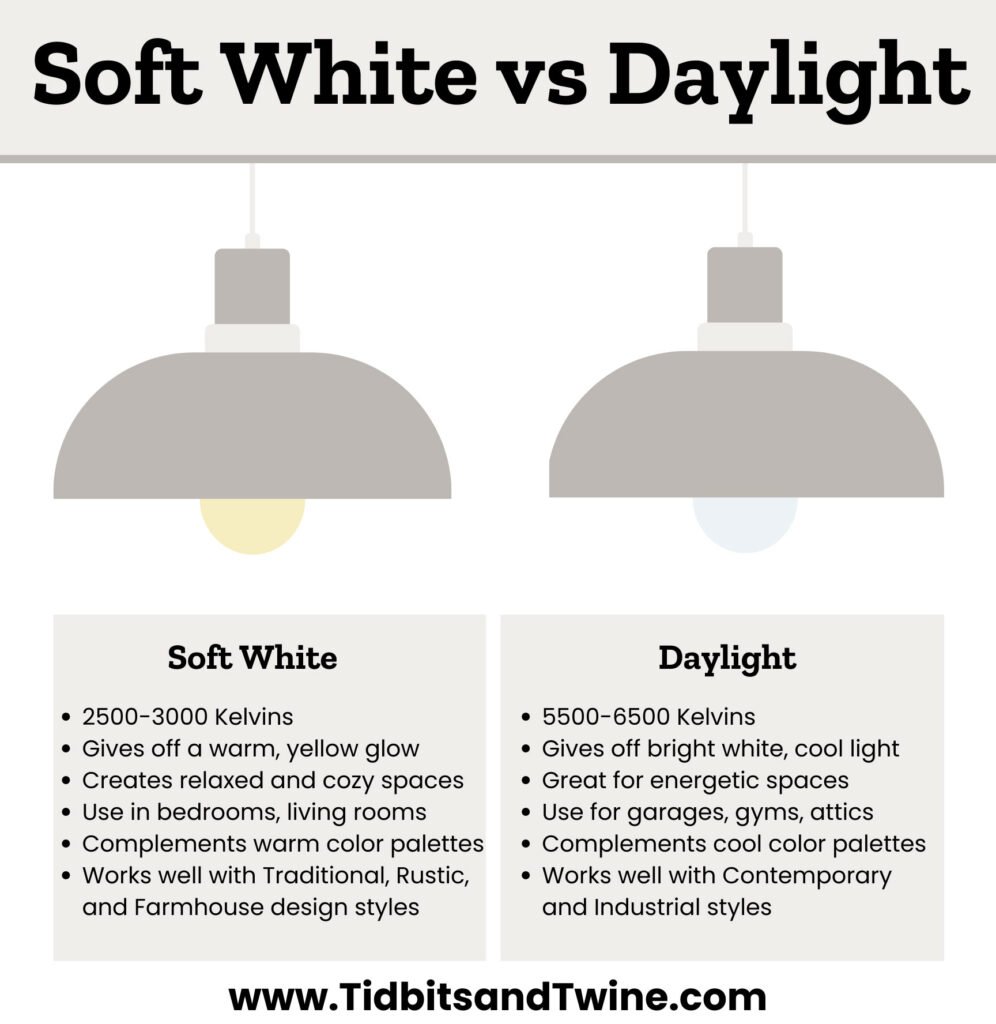
Understanding Bulb Temperature
Recently, I had some new LED recessed lights installed in my kitchen. The lights came with SIX different color options! Luckily for me, the nearby wall was painted white so I could easily see the color of each of the six Kelvin options to pick exactly what I wanted.
The key bulb temperature is to understand the Kelvin scale as well as the common terms for color groupings. Typically, light bulb boxes include both, but if you don’t know what they mean, it might as well be a foreign language!
The Kelvin Scale
Light bulb color temperature is measured on a scale referred to as Kelvin (K). It is used to describe the warmth or coolness of a light source. The Kelvin scale runs in degrees of Kelvin from 1,000 to 10,000. The lower the number the warmer and yellower the color. The higher the number, the cooler and bluer the color.
Color Groupings
Sometimes, instead of referring to a Kelvin number, you’ll hear people talk about a Soft White, or a Daylight bulb. These terms are simply groupings of Kelvin ranges used to describe a particular color group.
- Soft White : Typically in the range of 2700K to 3000K, soft white light bulbs emit a warm and cozy light, similar to the traditional incandescent bulbs. These are popular choices for living rooms, bedrooms, and other spaces where a relaxation is desired.
- Warm White: Falling within the range of 3000K to 3500K, warm white bulbs offer a slightly brighter and crisper light compared to soft white. They are suitable for areas where a balance between warmth and clarity is preferred, such as kitchens and dining rooms.
- Cool White: With a color temperature between 3500K and 4100K, cool white bulbs provide a bright and focused light, making them suitable for task-oriented spaces like offices, workshops, and kitchens where clarity and visibility are crucial.
- Daylight: Ranging from 5000K to 6500K or higher, daylight bulbs mimic natural sunlight. They emit a crisp and bright light, promoting alertness and concentration. Daylight bulbs are often used in areas where a bright and energizing atmosphere is desired, such as offices or workspaces.
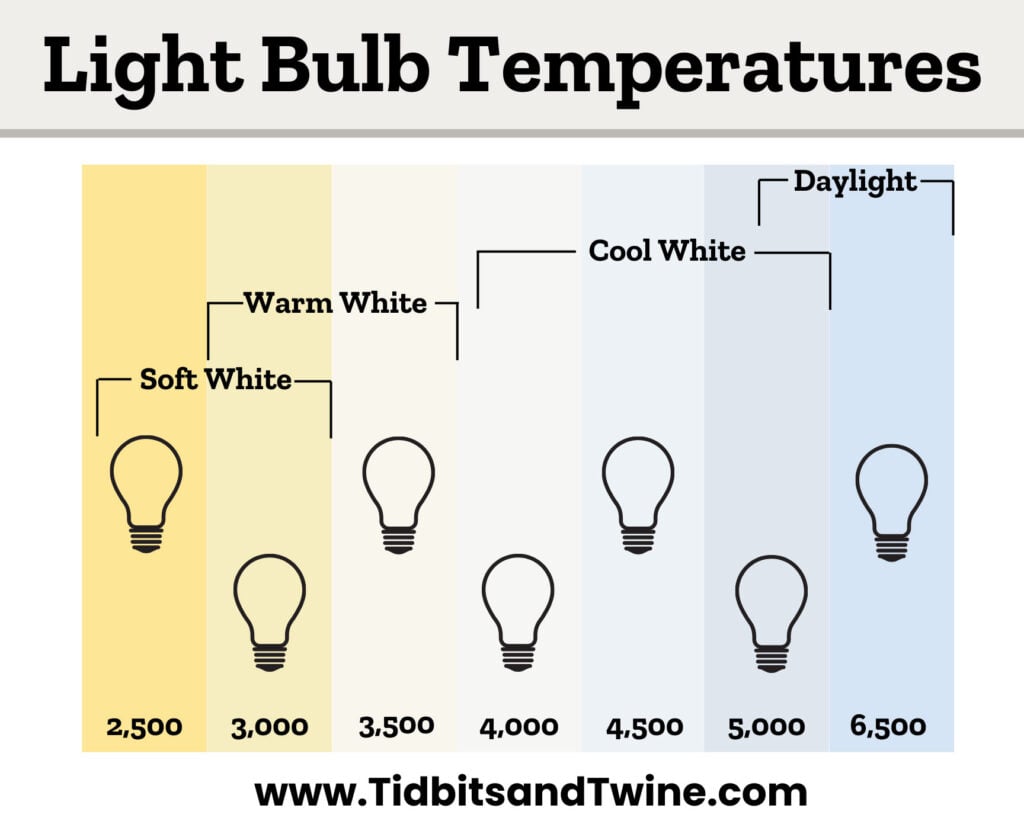
Soft White vs Daylight: What’s the difference
Soft white vs Daylight are two very common terms when talking about light bulbs, but as you can see from the chart above, they are actually at opposite ends of the Kelvin spectrum.
Soft white bulbs have a warm, cozy hue to them and fall on the yellow end of the spectrum. Daylight bulbs, on the other hand, give off a bright blue-tinted light similar to the light of the midday sun.
And while these might be the most common terms, they are not the most commonly used color temperatures for homes. Warm White and Cool White bulbs are more popular options for residential indoor use.
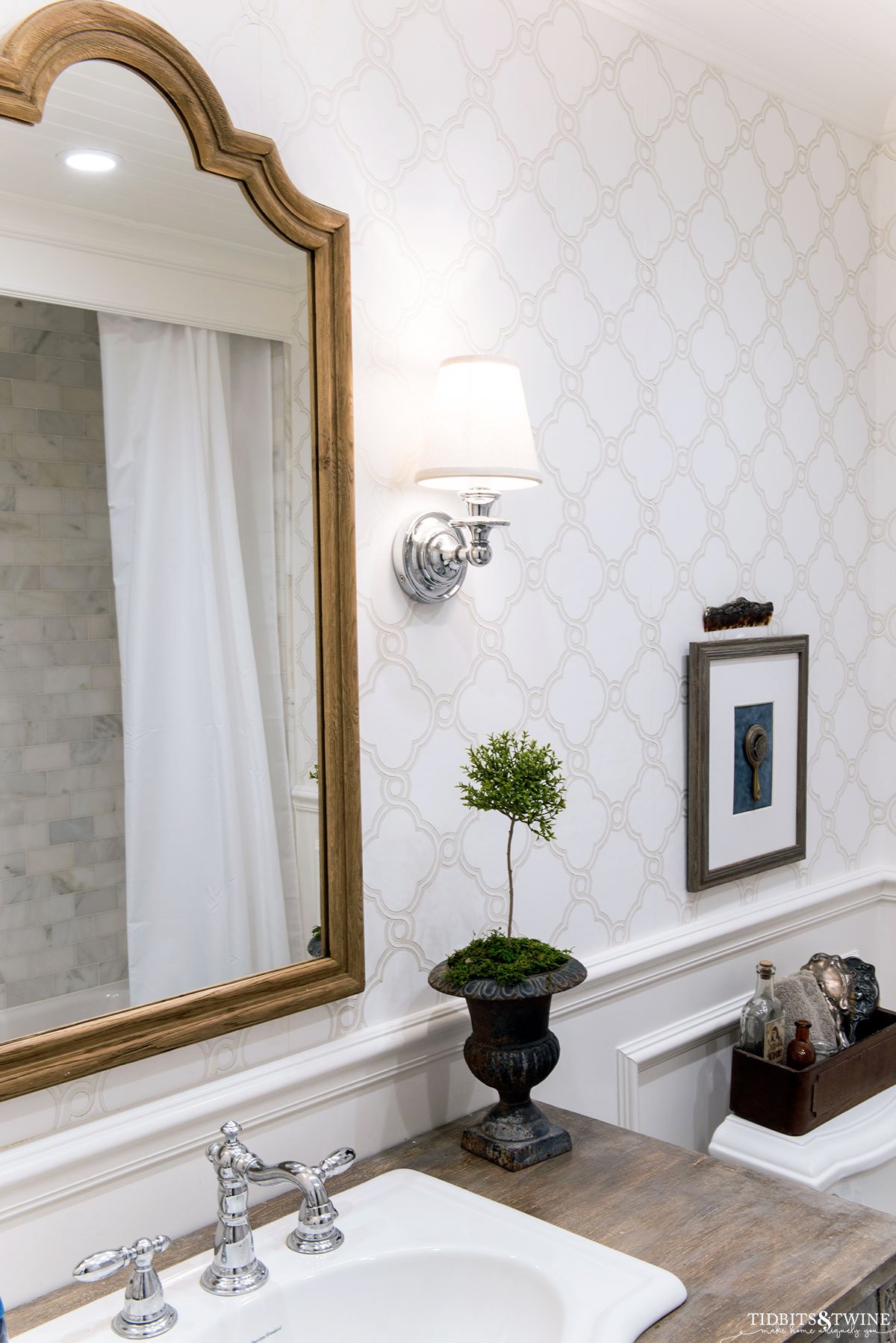
Why Does Color Temperature Matter?
Light bulb color temperature is a crucial element in interior design as it holds the power to shape the mood, ambiance, and overall aesthetic of a space. It can help to create a cozy, moody atmosphere, or an energetic and highly-productive space.
First off, think of light bulb temperature as the mood-setter for your space. Warmer tones, like the cozy 2700K range, give off that inviting glow perfect for chilling in the living room or winding down in the bedroom. But if you’re working out in your home gym or powering through work in your home office, the cooler tones around 5000K bring in that energizing, focused vibe.
The color temperature of light can play tricks on colors. Warmer light enhances warm colors, like reds and yellows, while cooler light complements cooler colors, like blues and greens. It’s like having your own personal lighting designer!
Now, here’s the cool part (pun intended): the right light can even affect your body’s internal clock. Cool, bluish light during the day can keep you alert and awake, while warmer, reddish light in the evening signals it’s time to wind down.
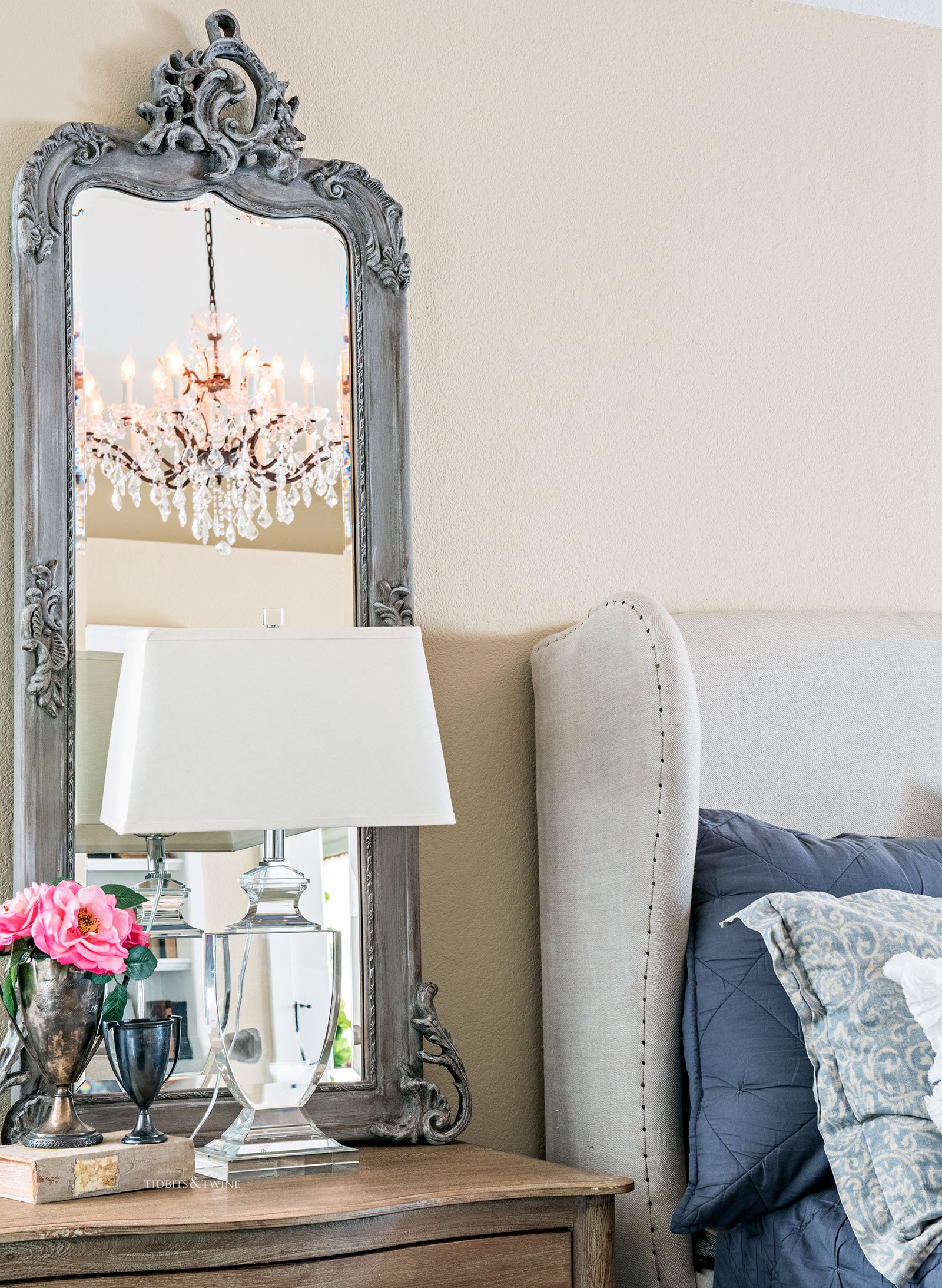
Color Temperature and Design Style
If your design style leans toward traditional or you use a warmer color palette, warmer bulb temperatures will complement your style nicely. Modern aesthetics or cooler color palettes lend themselves nicely to cooler bulb temperatures.
Here’s a look at some typical styles and their corresponding light bulb temperatures:
- Traditional Design:
- Soft white light bulbs, with temperatures around 2700K, align seamlessly with traditional design styles. The soft lighting and inviting glow complements classic furnishings, creating a cozy and timeless ambiance.
- Contemporary/Modern Design:
- Cool white or daylight bulbs, ranging from 3500K to 5000K, work well with contemporary or modern design. The crisp and bright white illumination enhances clean lines and minimalist aesthetics, contributing to a fresh and energized atmosphere.
- Rustic/Farmhouse Design:
- Warm white bulbs are ideal for rustic or farmhouse styles, adding a touch of warmth to exposed wood, distressed finishes, and natural textures. The cozy ambiance aligns with the down-to-earth feel of these design styles.
- Industrial Design:
- Cool white light can complement industrial design, especially in spaces with metal accents and raw materials. The bright, utilitarian quality of cool white light enhances the industrial aesthetic, providing functional illumination.
- Eclectic Design:
- Eclectic design allows for flexibility in light bulb temperature choice. Depending on the eclectic mix of styles and elements, one can experiment with a range of temperatures to create a harmonious or intentionally contrasting atmosphere.
- Transitional Design:
- Transitional design, blending traditional and modern elements, can benefit from a balance. Warm white light bulbs can provide a cozy feel while cooler temperatures in task-oriented areas maintain a contemporary touch.
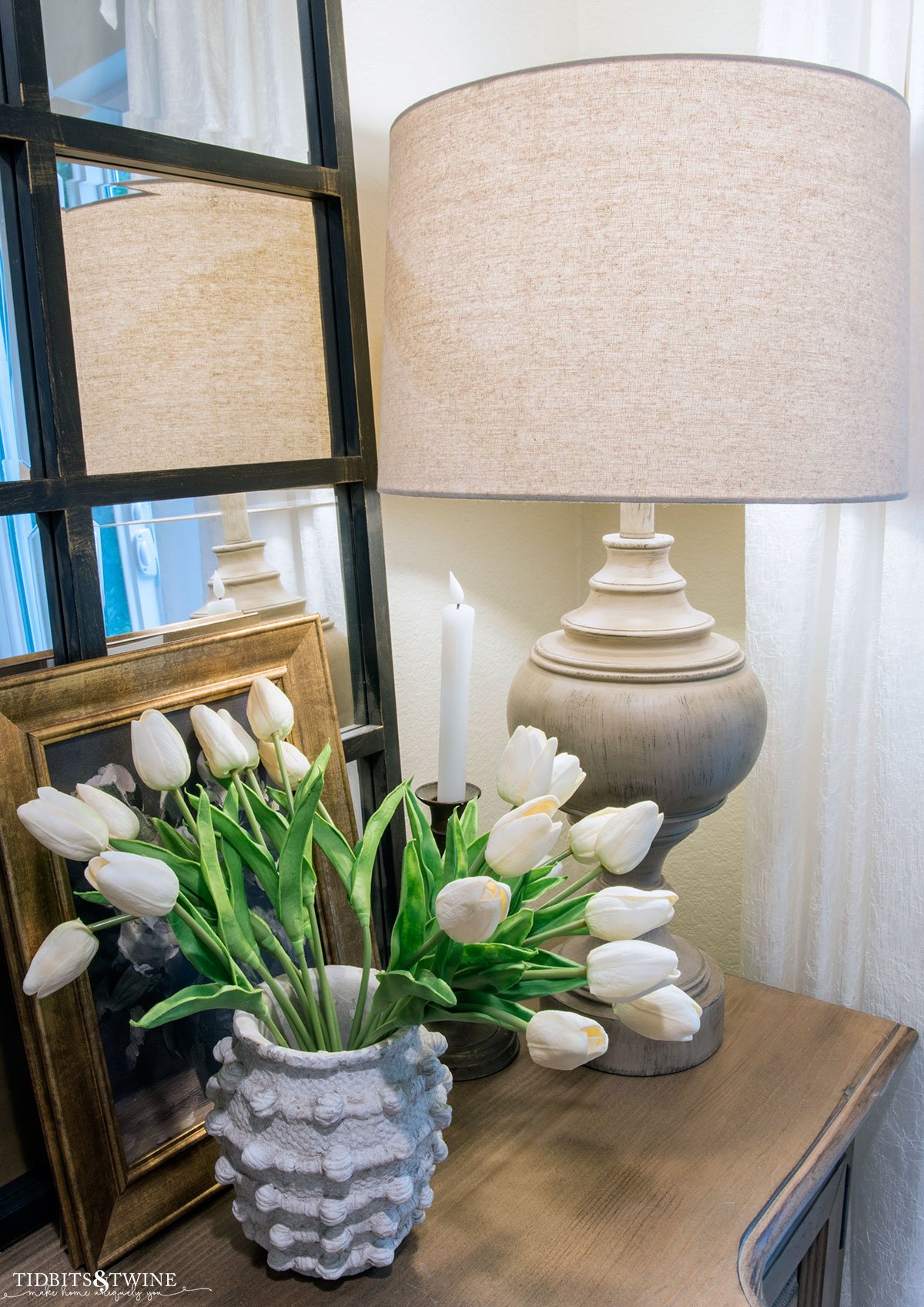
Which Color Should You Choose?
The honest answer is that it’s all a matter of personal preference. That being said, there are some guidelines to help make the job of selecting a color a bit easier.
Soft White Bulbs
Soft white bulbs are your key to cultivating a warm and cozy atmosphere in various corners of your home, casting a gentle glow that feels like a warm hug. Soft white bulbs are often used for:
- Living Room
- Dining Room
- Bedroom
- Reading Nooks
Warm White Bulbs
Only slightly less yellow, Warm White bulbs give a bit more visibility but still look warm and inviting. They are great choices for task areas like:
- Kitchen
- Hallway
- Bathroom
Cool White Bulbs
Cool White bulbs lean toward the blue end of the spectrum and are best suited for functional, task-oriented areas such as:
- Office
- Workspaces
- Laundry Rooms
- Kitchens
- Bathrooms (especially for task-oriented areas for makeup or shaving)
Daylight Bulbs
Daylight bulbs don’t see a lot of use in the residential home setting given their blue tint. They are great for providing a vibrant, energizing ambiance, though, and are perfect for:
- Gyms
- Garages
- Attics
- Work Spaces
Additional Tips & Tidbits
1. Layer Your Lighting
As always, use more than one light source in a room. You can use overhead lighting for general light, task lights for specific needs, and ambient lighting to create a specific mood. Layering your lighting is not only practical but adds dimension to your room.
2. Don’t Mix Your Color Temperatures within One Layer
You can mix color temperatures in a room, but not within a layer. So for example, you might use Warm White for your overhead lighting and Cool White for your Task lighting. But if you have multiple lamps or sconces in a room that are all part of your ambient lighting, make sure everything within that layer is the same color temperature.
3. Consider a Dimmer Switch
Dimmer switches are a great idea if you want to take bright lights and dim them for a bit of ambiance. Note that the color doesn’t change, but the light output can be adjusted. Remember if you’re using an LED bulb to check to ensure it is dimmable, as not all of them are.
My Favorite Bulb Temperature
My home has a Southern exposure so the natural light tends to lean a bit yellow. That being said, I like to tone down the warmth a bit by using cooler bulbs for my general lighting.
All of my overhead lights are considered Warm White at 3,000K. Anything higher starts to look too blue in my home and anything lower is too yellow. My ambient lighting, however, is all 2,700K for a softer, warm light.
So, next time you’re choosing a light bulb, think about the mood you want, the tasks you’ll be doing, and the colors in your space. It’s not just about light – it’s about creating an atmosphere that fits your style and needs. Happy lighting! 💡✨
More Design Guides
- Nightstand Dimensions: How to Find the Perfect Fit
- How High to Hang Pictures: Everything You Need to Know
- Design Rules You Should Never Break
- Design Guide: The Right Wall Sconce Height for Every Room
- When to Decorate Above the Bed


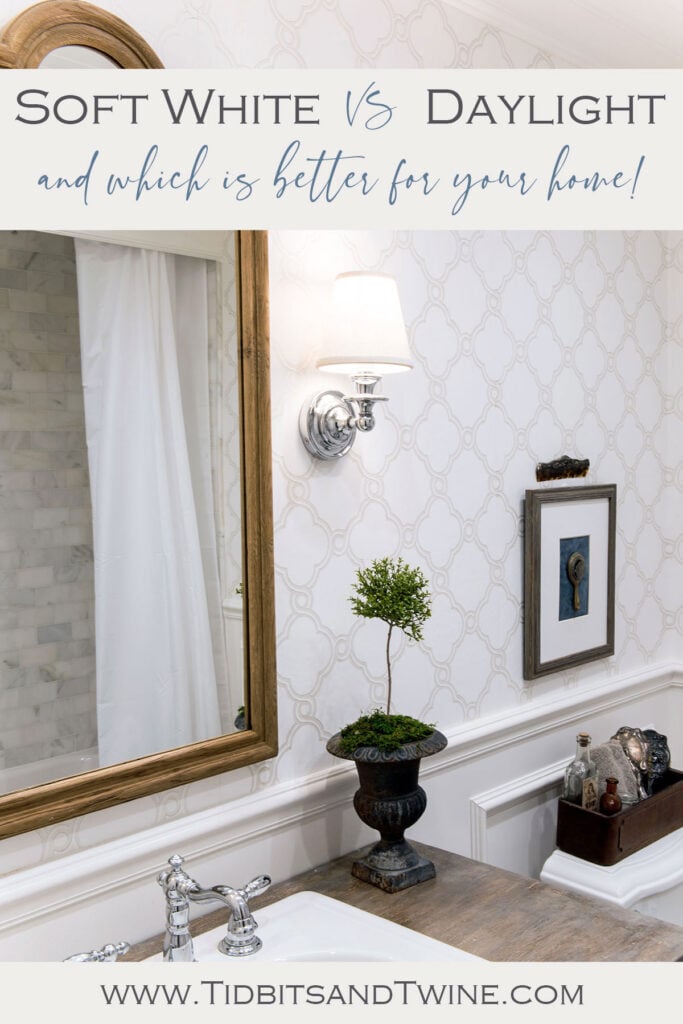
Join the Community
Let’s keep in touch! Get exclusive artwork plus the latest news delivered directly to your Inbox!

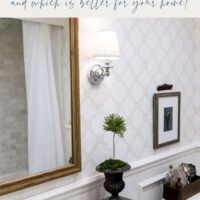
Thanks so much for this information, very helpful! What would you recommend for a sewing room/craft room where seeing and combining colors is important?
Hi Ellen,
For overhead lights, I’d probably stick somewhere between 3000k-4000k if it were me, but because I would want to avoid the yellow end and the blue end of the spectrum. You might have to test them out and see how each looks in youir home because the color of the room and the natural light really make a difference. For task lighting, my mom is a quilter and loves the Ott light, which is supposed to help show true colors for fabrics, threads, etc. For everyday sewing, she likes the Brightech LightView Pro. I hope that helps!
-Kim
I don’t think light bulbs are boring!!! 😄😄 Lighting and light bulb tones affect the colors of cabinets, walls, flooring, everything!! I have daylight bulbs in my kitchen because they make my natural wood colored cabinets look less orange, and I have soft white in my dining room because I like it there. I also think wattage deserves to be taken into account to get the mood you want in a room. 😊
Very useful, thank you.
Now there are also shades to consider. If they are black, colored or patterned, it influences the bulb color. Yet another layer of complication and tons of $$$ for experimentation.
I might start a “bulb trade program” locally among like minded folks who bought wrong.
Lol! So true! I have a graveyard of lightbulbs!
….and PINNING! I don’t know how you figured all this “kelvin” stuff out but I so appreciate it!!! I’ve got a bathroom fixture with white globe lights and it’s a mixture of grungy orange-tinged lights and sickly blue lights. None are white! But I keep it that way because one seems to cancel the other in a windowless bathroom. Now I will know how to fix it.
What do you use for porch and driveway lighting?
Hi Carolyn! Isn’t it funny how much the color of the bulbs affect us without our even realizing?! So my outdoor lights have yellow glass and I don’t like how anything blue-tinted looks in them. My outdoor lights are 3,000K which in my home, is the most neutral color (but every home is different depending on lighting and design style). If my fixtures had clear glass, though, I’d probably pick a slightly higher Kelvin just because it’s so important to be able to see clearly in the dark! Also important for LED light bulbs is the number of Lumens. The higher the Lumen number, the brighter the light. So for outdoors, regardless of what Kelvin rating you choose, make sure you have enough Lumens to properly light the area.